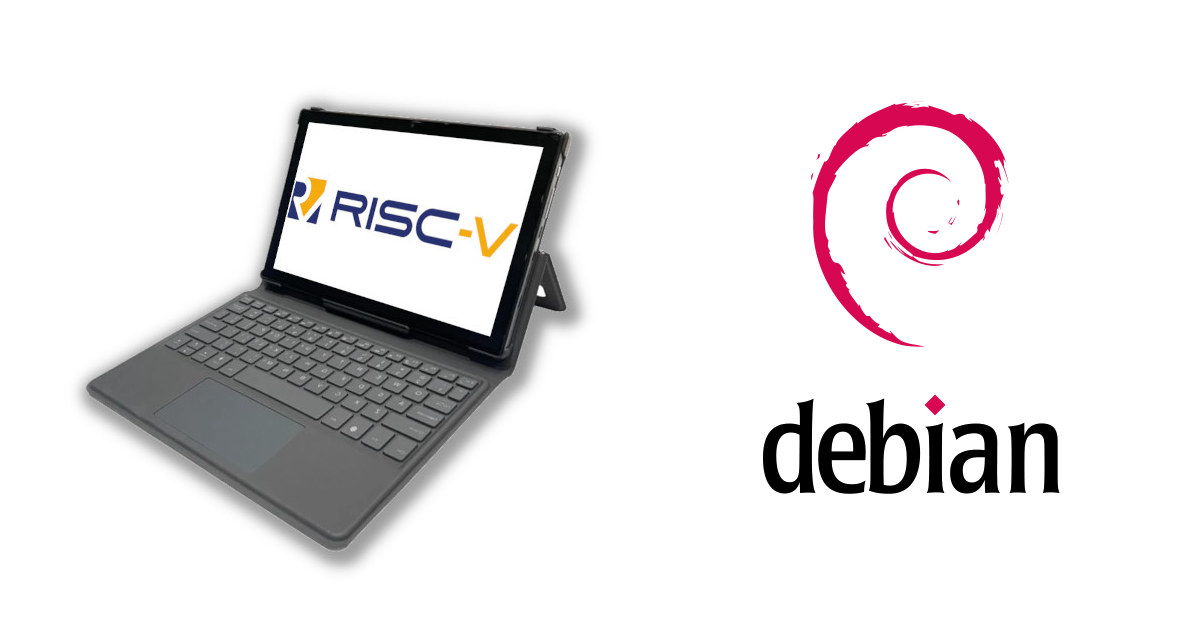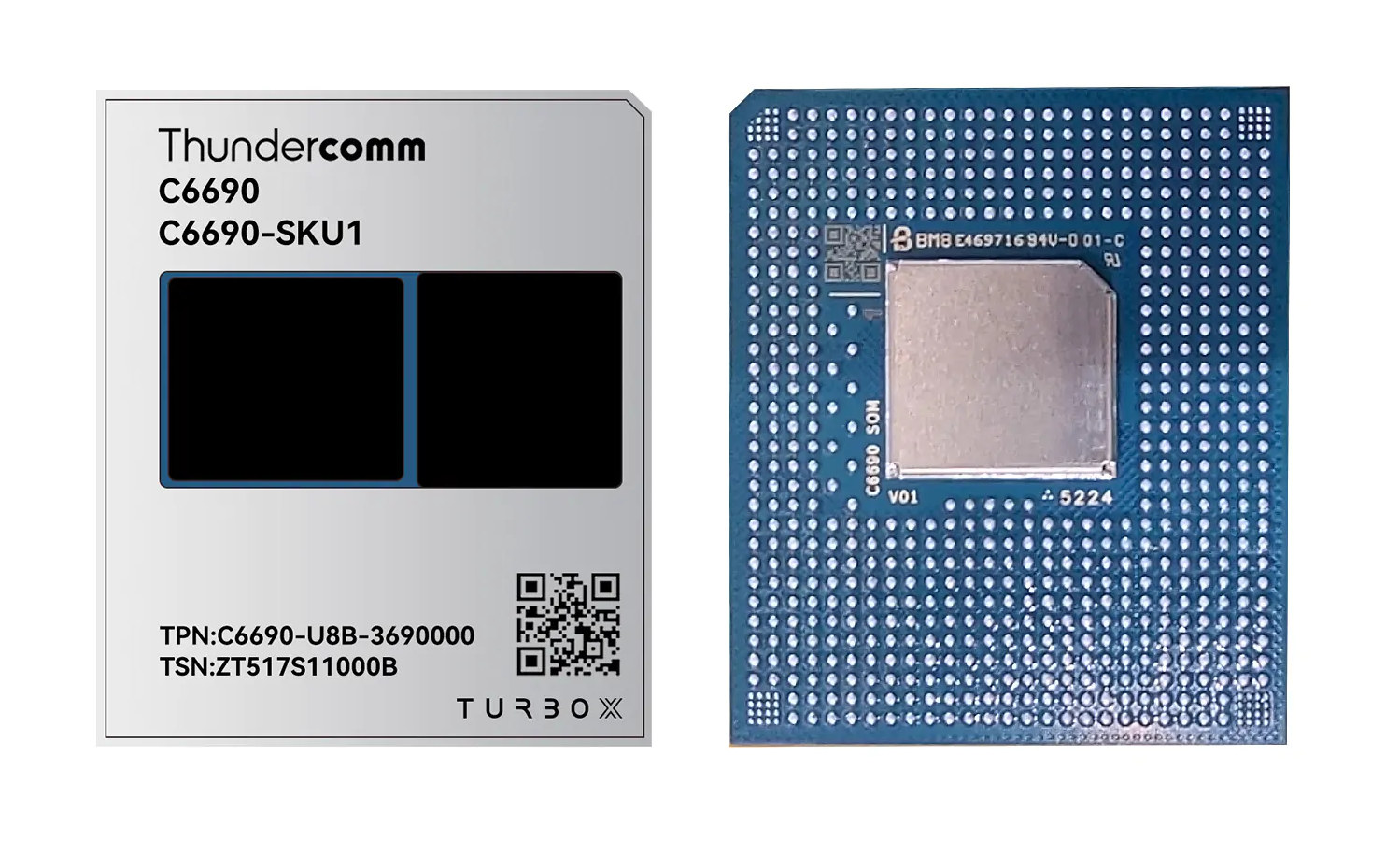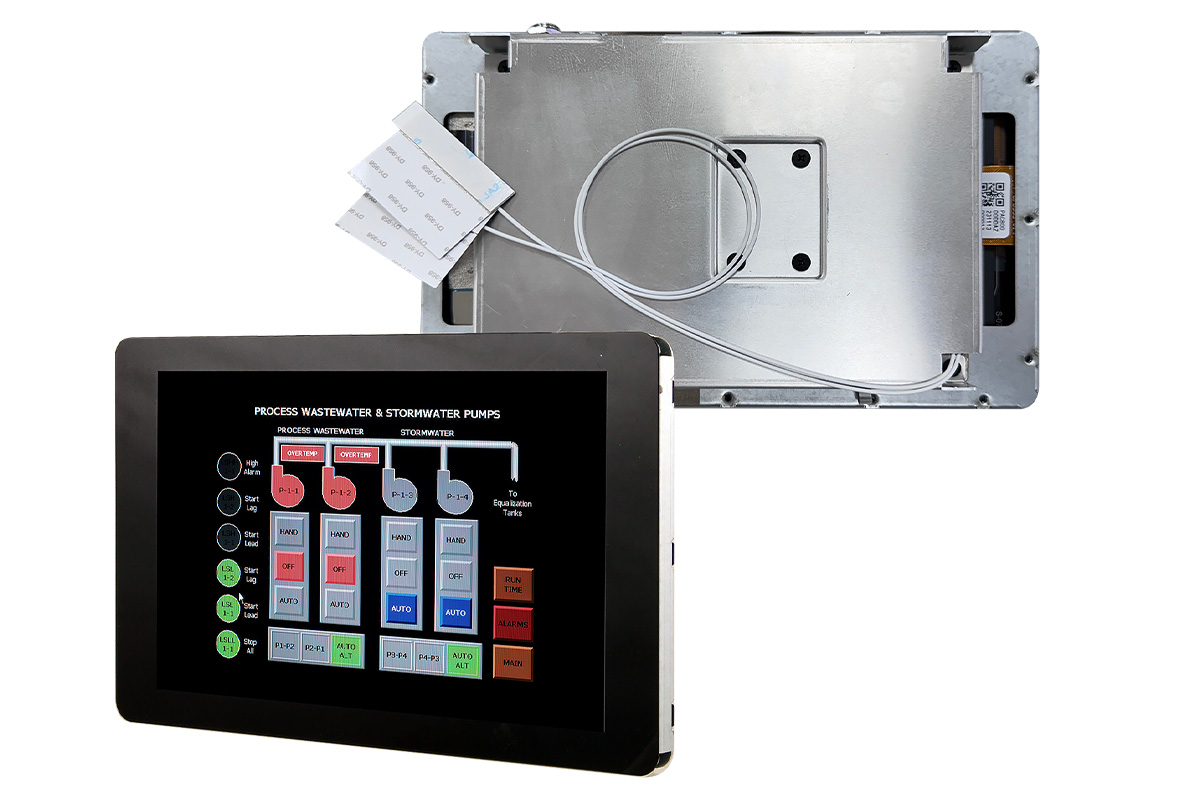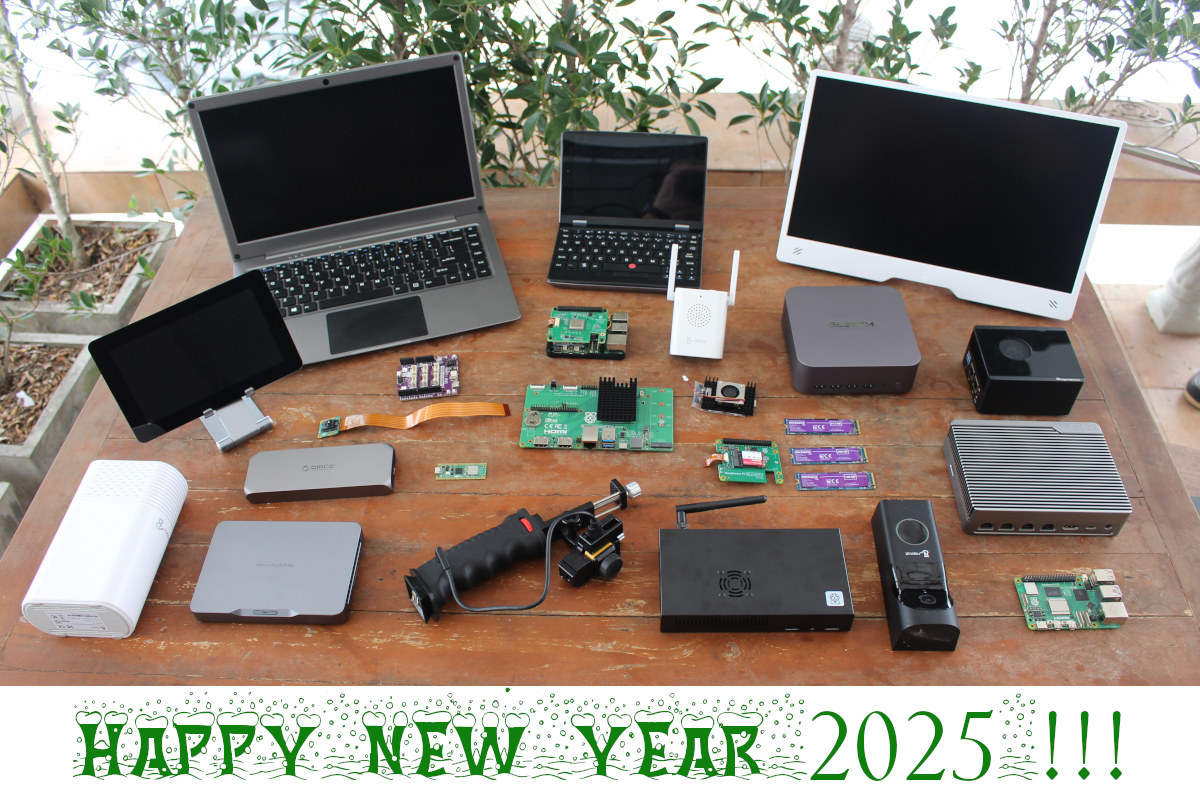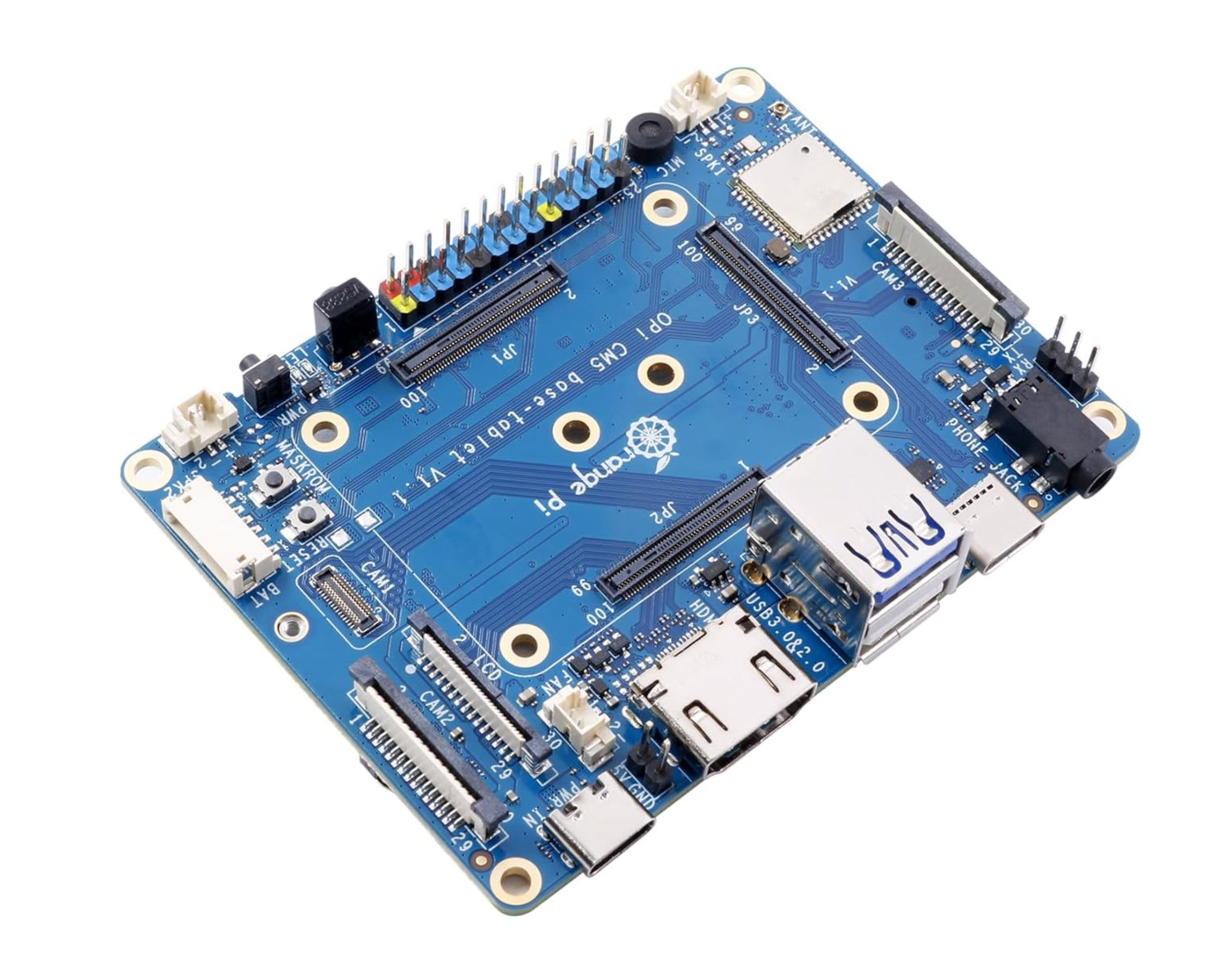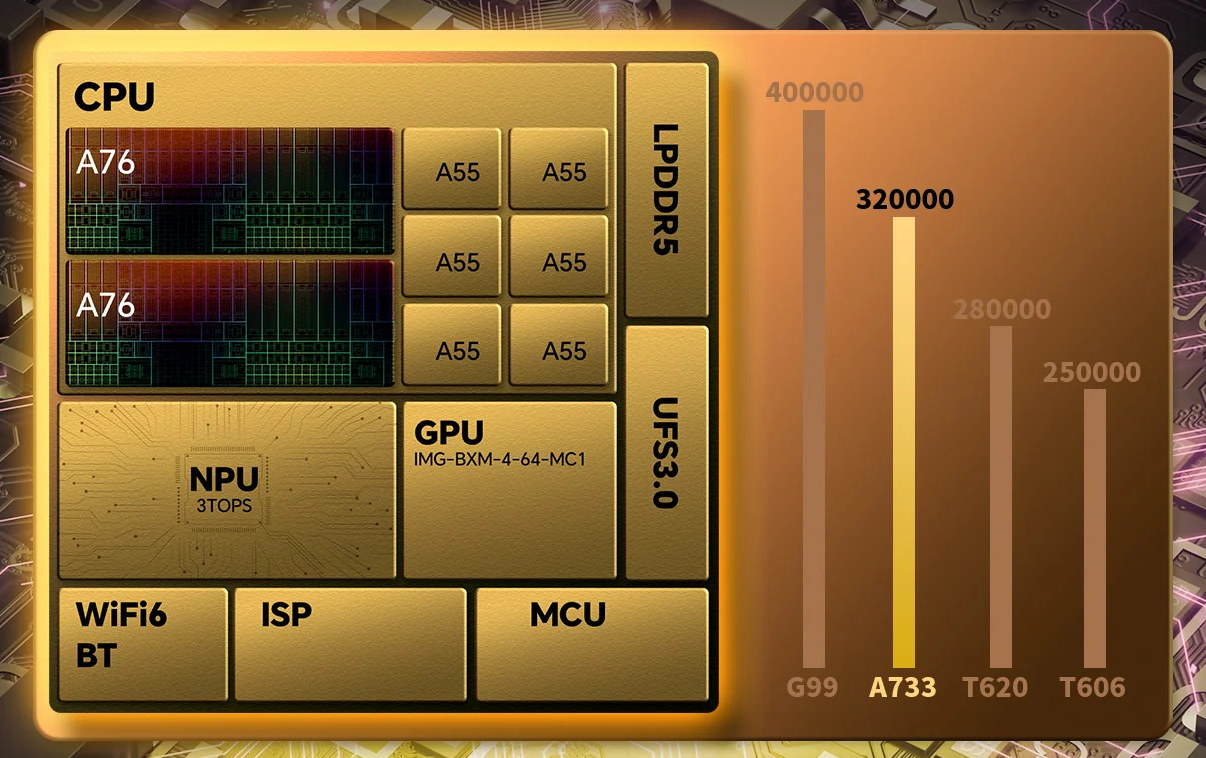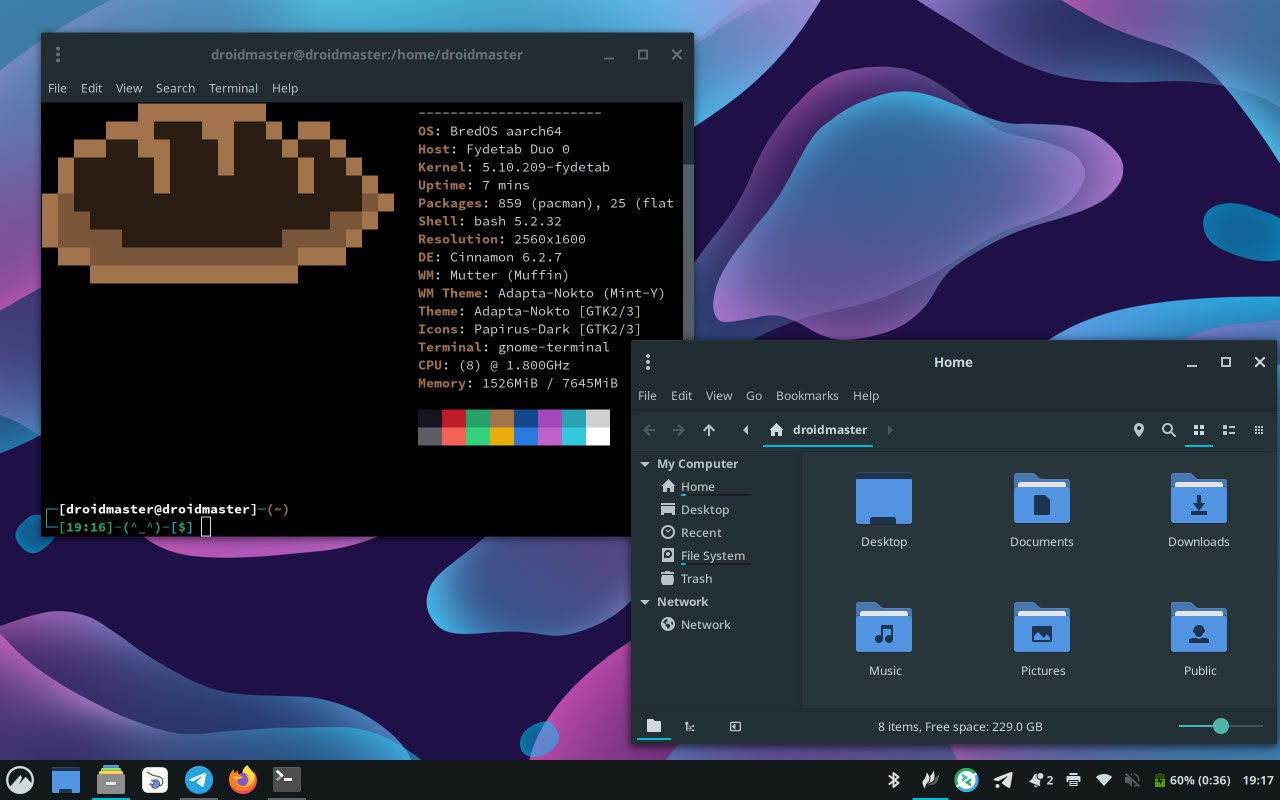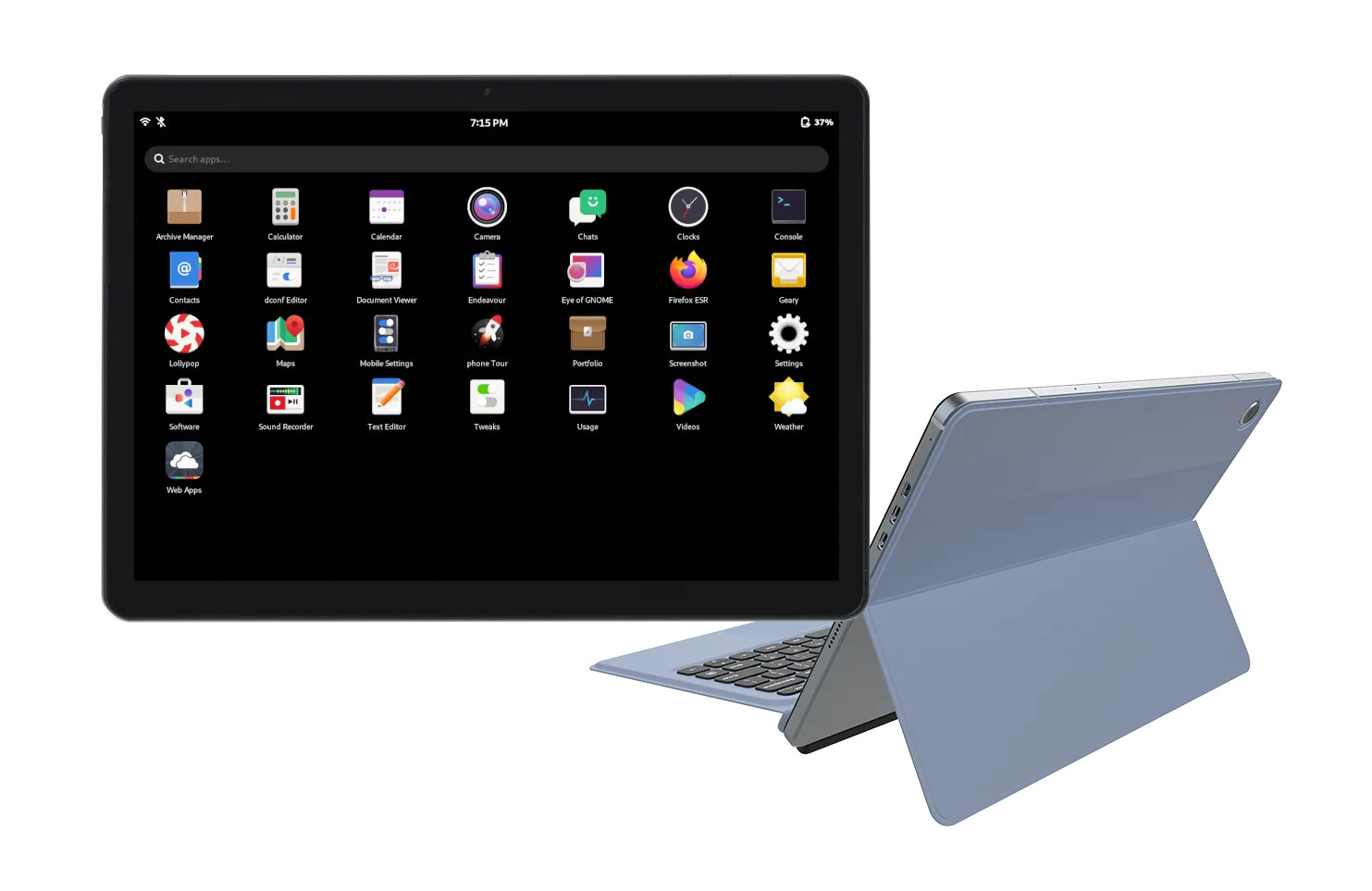Pine64 has launched an updated version of the PineTab-V RISC-V tablet with the same StarFive JH7110 SoC, 8GB RAM, and 128GB eMMC flash, but a few small hardware changes, and a Debian-based Linux image maintained by StarFive themselves. The PineTab-V is not exactly a new RISC-V tablet since it was launched in 2023, but at the time it was reserved for developers since it shipped with nothing… Users had to install the OS (that did not support the display yet) themselves, and work on the software/OS to improve it. The new model still targets developers and enthusiasts/early adopters, but at least now there’s a Debian 12 image optimized for the PineTab-V. The hardware is mostly the same, except Pine64 added an accelerometer, a status LED, an ID for the PineTab-V in the EEPROM, and a fix for slow charging while the tablet is turned off. PineTab-V (2025) specifications: SoC – […]
Thundercomm TurboX C6690 SoM runs Android 15 on Qualcomm DragonWing QCS6690 SoC for terminal equipment
Unveiled at Embedded World 2025, Thundercomm’s TurboX C6690 is a SoM (System-on-Module) powered by a 4nm Qualcomm Dragonwing QCS6690 octa-core SoC, and designed for Android 15-based terminal equipment such as industrial handheld devices, industrial tablets, edge computing, and smart retail applications. The LGA system-on-module features a multi-chip package that combines 8GB LPDDR4x memory with 256GB UFS storage, and offers MIPI and DP (USB) display interfaces, four MIPI CSI camera interfaces, a USB 3.1 interface, a PCIe Gen2 interface, and various low-speed I/Os such GPIO, I2C, UART, and SPI. Thundercomm TurboX C6690 SoM specifications: SoC – Qualcomm Dragonwing QCS6690 CPU – Octa-core Qualcomm Kryo CPU 7-series (1x Kryo Prime core @ 2.9GHz, 3x Kryo Gold @ 2.7GHz, 4x Kryo Silver @ 2.0GHz) GPU – Qualcomm Adreno GPU 7-series DSP – Qualcomm Hexagon DSP with HVX and HMX ISP – Qualcomm Spectra ISP 665 image processing VPU Video Encode – Up to […]
Intel N50 fanless open-frame panel PCs features 7” and 10” PCAP touch display, HDMI 2.0a, RS-485/232
BCM Advanced Research has recently introduced two new fanless open-frame panel PCs powered by an Intel Processor N50 CPU – the OFT07W-ADLN (7-inch) and OFT10W-ADLN (10-inch) – which are low-cost all-in-one embedded computers designed for tablet-like usability. Both modules feature 8GB LPDDR5 memory, 64GB eMMC storage, and an M.2 E-key slot for Wi-Fi/Bluetooth connectivity. These panel PCs come with PCAP touchscreens (800×1280 for 7-inch and 1200×1920 for 10-inch) with various connectivity options including USB, HDMI 2.0a, RS-232/485, and Gigabit Ethernet. With 12-24V DC input supply, fanless operation, and a durable steel frame, these compact open-frame panel PCs are meant for space-constrained applications like HMIs, self-service kiosks, gaming consoles, medical terminals, smart vending machines, digital signage, and more. BCM OFT07W-ADLN and OFT10W-ADLN specifications: SoC – Intel Processor N50 dual-core processor up to 3.4 GHz with 6MB cache, 16EU Intel UHD Graphics; TDP: 6W System Memory – Up to 8GB LPDDR5 onboard Storage – […]
CNX Software’s 2024 Year in review, website statistics, and what to expect in 2025
That’s it! 2024 is almost over, and it’s time to reflect on what happened during the year. So I’ll look at the highlights of 2024, share some CNX Software website traffic statistics, and speculate on what may be ahead of us in 2025. Looking back at 2024 Raspberry Pi was super active this year with 22 product launches that included boards and modules like the Raspberry Pi 5 with 2GB RAM, Raspberry Pi Pico 2 and Pico 2 W, Raspberry Pi CM5, expansion modules like the Raspberry Pi AI camera, AI HAT+, and M.2 HAT+, new accessories such as the Raspberry Pi Touch Display 2 and the Raspberry Pi Monitor, and the new Raspberry Pi 500 keyboard PC among others. As usual, there was also plenty of announcement of accessories from third parties, and some boards with the new Raspberry Pi RP2350 Arm/RISC-V microcontroller. There weren’t any ground-breaking Arm processors […]
Orange Pi CM5 “Tablet” Base Board drops Ethernet for WiFi 5, adds battery support, M.2 socket, 26-pin GPIO header…
The Orange Pi CM5 was launched as an alternative to Raspberry Pi CM4/CM5 last July with a Rockchip RK3588S octa-core Cortex-A76/A55 SoC, up to 16GB LPDDR4x, 256GB eMMC flash, and three board-to-board connectors maintaining partially compatibility with the Raspberry Pi Compute Module 4. At the time, Orange Pi also introduced the Orange Pi CM5 Base Board with HDMI 2.1, one Gigabit Ethernet port, two 2.5GbE ports, USB 3.0/2.0 ports, four camera connectors, and more. The company has now launched the Orange Pi CM5 “Tablet” Base Board without Ethernet ports, making use of WiFi 5 and Bluetooth 5.0 for networking instead. It keeps many of the same features but adds a 26-pin GPIO header, an M.2 Key-M socket for SSD storage, DP 1.4 and MIPI DSI display interfaces, and various audio interfaces. However, it does with “only” three camera interfaces. It’s quite thick to be used in a typical tablet, but […]
Allwinner A733 octa-core Cortex-A76/A55 AI SoC supports up to 16GB RAM for Android 15 tablets and laptops
Allwinner A733 is an octa-core Cortex-A76/A55 processor with an optional 3 TOPS NPU and support for up to 16GB RAM designed for Android 15 tablets and laptops such as the Teclast P50Ai with a 10.92-inch touchscreen display. With two Cortex-A76 cores, six Cortex-A75 cores, an Imagination BXM-4-64 MC1 GPU, and an NPU, the Allwinner A733 looks very similar to the Allwinner A736 we noted in a roadmap last year. But there’s no news about the A736, so maybe the name was dropped and the Allwinner A733 was launched instead. Allwinner A733 specifications: CPU Dual-core Arm Cortex-A76 @ up to 2.00 GHz Hexa-core Arm Cortex-A55 @ up to 1.79 GHz Single-core RISC-V E902 real-time core GPU – Imagination Technologies BXM-4-64 MC1 VPU 8Kp24 H.265/VP9/AVS2 decoding (no mention of AV1) 4Kp30 H.265/H.264 encoding AI accelerator – Optional 3 TOPS NPU Memory 192 KB SRAM + 512 KB shared SRAM 32-bit LPDDR4/LPDDR4x/LPDDR5 interface […]
BredOS Arch Linux Arm distribution runs on Rockchip RK3588 single board computers
BredOS is a Linux distribution based on Arch Linux Arm and optimized to run on Rockchip RK3588/RK3588S single board computers (SBCs) with current support for 22 boards from Radxa, Orange Pi, Khadas, and others. Board vendors will usually provide OS images for their SBCs, but the quality and support may be limited, so projects like Armbian and DietPi are maintaining Ubuntu and/or Debian images for popular single board computers. But if you’re an Arch Linux (Arm) fan, there are fewer choices, and you may have to roll your own port for your board. BredOS provides an easy-to-use alternative based on Arch Arm Linux. BredOS highlights (provided by the developers): User-Friendly Interface – A simplified and intuitive user interface for easy navigation and use. Arch-Based – Built on top of Arch Linux, ensuring access to a vast repository of packages and a rolling release model. Arm Support – Optimized for Arm-based […]
Juno Tab 3 is a pricey 12.1-inch Linux tablet powered by an Intel Processor N100 CPU
Juno Tab 3 is a rare Linux tablet running Mobian Phosh, Ubuntu, or Kubuntu on an Intel Processor N100 quad-core Alder Lake-N processor and equipped with a 12.1-inch touchscreen display with 2160×1440 resolution. We’ve covered many Intel N100 hardware platforms, mostly mini PCs, and the closest thing to a tablet was the Higole F9B Pro mini PC with a 7-inch touchscreen display and a 26mm thick design. The Juno Tab 3 is a proper Linux tablet with an Intel N100 CPU, 12 GB RAM, 512GB SSD, and a 12.1-inch touchscreen display in an 8.7mm thin design. Juno Tab 3 specifications: SoC – SoC – Intel Processor N100 quad-core Alder Lake-N processor @ up to 3.4 GHz (Turbo) with 6MB cache, 24EU Intel HD graphics @ 750 MHz; TDP: 6W System Memory – 12GB LPDDR5 4,800MT/s Storage 512GB, 1TB, or 2TB M.2 SATA 2242 SSD MicroSD card reader Display – 12.1-inch […]


